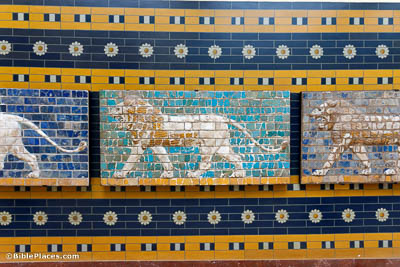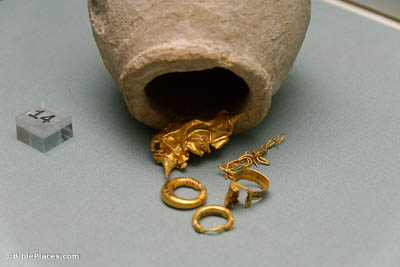Nebuchadnezzar king of Babylon came up, and Jehoiakim became his servant three years (2 Kings 24:1).
Nebuchadnezzar II was a prolific builder, and one of his best known and most recognizable monuments is the Ishtar Gate at Babylon. Several stories tall, this mudbrick gate was clad in glazed tile that included depictions of lions, bulls, and dragons. Sections of the gate decorations have found their way into many of the world’s museums, including the British Museum, the Louvre, and the Oriental Institute Museum in Chicago.





